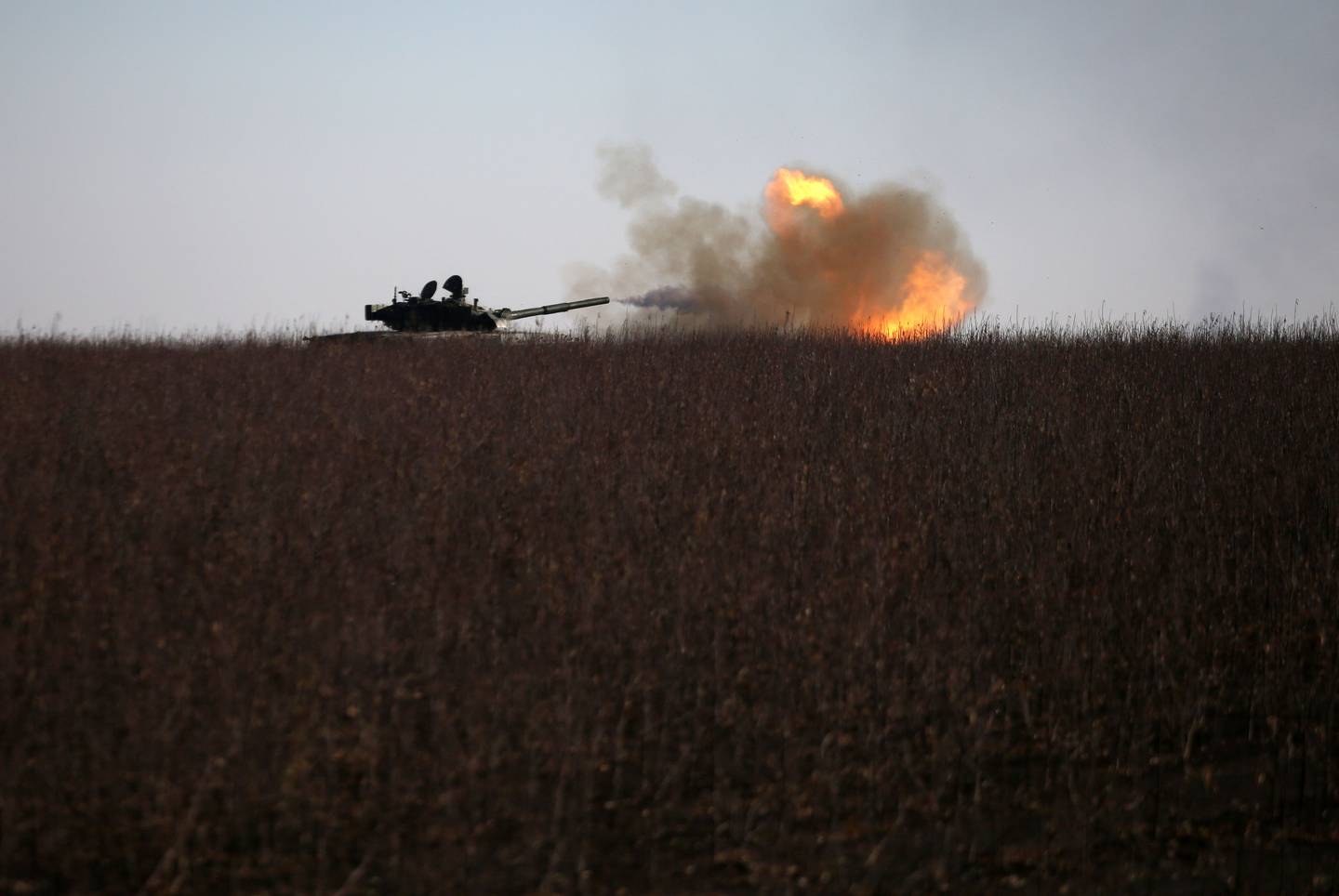Editor’s note: This story was originally published in the February 2023 issue of Defense News, but we are resharing it on the anniversary of Russia’s invasion of Ukraine.
WASHINGTON and ROME — Germany’s promise early this year to send tanks to Ukraine marked the country’s latest concession and provided a cap to the gradual escalation in the kind of equipment allies were supplying.
Indeed, when Russia invaded Ukraine last February, its allies resisted pleas for offensive aid and followed a narrow definition of protective equipment. In Berlin, leaders initially shied away from aid that didn’t fit the German definition of “defensive.”
That’s changed, with Germany now pledging to deliver Leopard 2 battle tanks and approving other countries’ requests to follow suit. Chancellor Olaf Scholz also recently authorized supplying infantry fighting vehicles to help push Russian forces out of occupied Ukraine.
The evolving approach fits a conflict as fluid as it is unpredictable.
Now, a collection of Western tank-type vehicles is slated to arrive on the front lines this spring, with training already underway in donor countries. The vehicles carry the hope of enabling battlefield wins for Ukrainian forces that will lead to some kind of war-ending scenario — if the weapons arrive in time.
Scholz has told Tagesspiegel newspaper he wants Russian President Vladimir Putin to answer one question: “How is the world getting out of this terrible situation?”
Defense News spoke with national security analysts, lawmakers and retired officials, asking each how the conflict could end.
Their answers are glum: The war will be expensive, cost lives and likely last at least a few years — or even become interminable. It will tax the American and European defense industries, especially when it comes to munitions, and could cause economic ruin in Russia. All this while the possibility of nuclear escalation remains.

And they said winning will depend on a Congress with the resolve to ensure continued support to Ukraine. But even then, the very concept of victory may be inaccurate, they warned.
“For this year, it would be very, very difficult to militarily eject the Russian forces from all — every inch of Ukraine or Russian-occupied Ukraine,” Gen. Mark Milley, chairman of the U.S. military’s Joint Chiefs of Staff, told reporters during a visit to Germany last month. “That doesn’t mean it can’t happen, doesn’t mean it won’t happen, but it’d be very, very difficult.”
Milley has insisted the war will likely end at the negotiating table — at some point. Officials and experts expect a bloody spring, as Russia sends new conscripts to the front line and Ukraine tries to repel an offensive while mounting its own.
As the war enters its second year, the spigot of military aid is still gushing. But industrial capacities are spotty, and nations have started to scrutinize how much equipment they can spare while maintaining their own self-defense requirements and that of NATO.
At the same time, election season in the United States — Ukraine’s most important backer — stands to spur arguments that a war in Europe of unknown duration is a costly nuisance for America.
How long a war?
Asked about the likely duration of the Ukraine war, analysts in the United States and Europe made similar predictions, with timelines running from months to years to “indefinite.”
Yohann Michel, a research analyst in Berlin with the International Institute for Strategic Studies think tank, anticipates “long months” ahead, while Michael Kofman, the research program director in the Russia Studies Program at the Center for Naval Analyses in Washington, expects additional years of fighting.
“Wars typically tend to go on longer than people expect or hope, but especially interstate conflicts of this length,” Kofman said. “History tells us that wars which go on this long … are likely to become protracted, lasting several years.”
Perhaps Italian analyst Lucio Caracciolo was the most pessimistic of all. “This war will last indefinitely, with long pauses for cease-fires,” he said.
“It will only stop when Ukraine or Russia or both collapse, since for both sides this is a matter of life or death,” added Caracciolo, the editor of Italian geopolitics publication Limes.
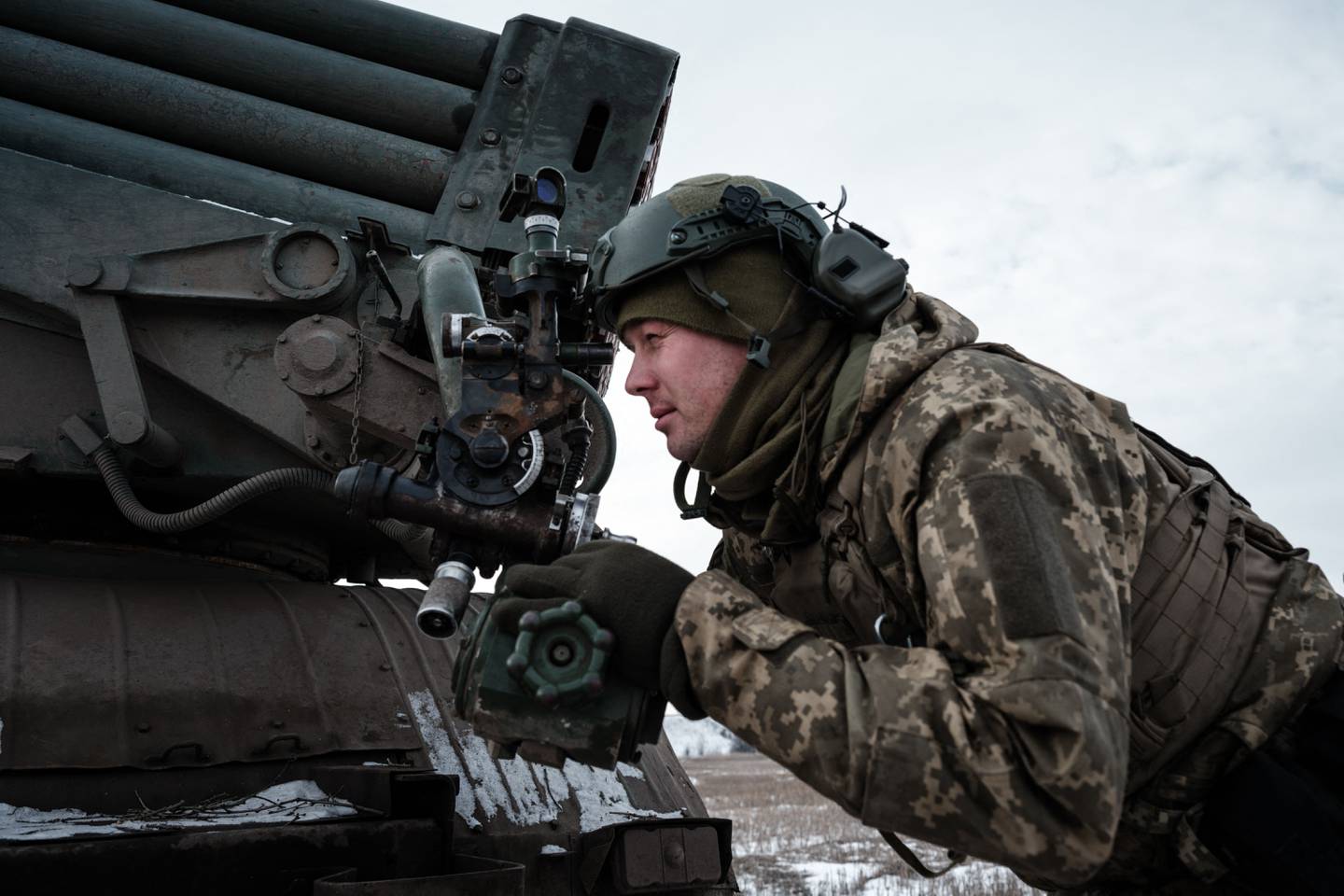
Peter Roberts, a senior associate fellow at the Royal United Services Institute in London, said there are different ways to define the end of a war: “the end of the kinetic phase” versus “the end of a Georgia-style frozen conflict or a Korea-like situation that runs for years.”
“I would love to think the kinetic phase could end in 2023, but I suspect we could be looking at another three years with this scale of fighting,” Roberts said.
Michel added there are as-yet-unknown factors that will determine the end of the conflict.
“Who will be first to launch the next offense? What role will the weather play?” he wondered. “There is the problem of ammunition — the first side to have a shortage will be in trouble. While there has been no real European program to increase production, will Russian stocks be replenished by China?”
And long, exhaustive fighting carries its own risks, according to Benjamin Jensen, a war gaming expert at the Center for Strategic and International Studies. That’s because the longer conflicts last, the more they exhaust finite resources and, hence, the parties are more willing to gamble.
“Even technologically advanced, wealthy states in the Middle East eventually reached a point where they’re lobbing missiles at civilian cities, openly using chemical weapons and fighting in waves — just people rushing across the field getting shot at,” Jensen said.
Either side may act boldly if it winds up on the ropes and needs an exit strategy. Ukraine, Jensen suggested, might try a spectacular special operation to assassinate a Kremlin official, or Russia could decide to use — or simply test — nuclear weapons.
In Jensen’s view, even the collapse of Russia’s conventional force or a traditional Ukrainian victory may not mean the war is over; either could lead to nuclear escalation by Russia.
On the offensive this spring
On Feb. 24, 2022, Russian forces attacked Ukraine without frozen ground to support their armored vehicles, which meant they had to stick to roads, where they stood out as easy targets.
But this winter, they’re expected to launch attacks across open plains, which would be harder to defeat, said Daniel Rice, a former U.S. Army captain who last year became a special adviser to Gen. Valerii Zaluzhnyi, the commander of the Ukrainian military.

“The worry is that a large Russian offensive action could punch through, and there’s a lot of worry they could take Kyiv,” said Rice, now president of the Thayer Leadership consulting group in West Point, New York. “People are waking up to the reality that you need to give offensive weapons to end this war — at least to win it.”
The challenge now is training and equipping an armored force big enough and sophisticated enough to envelop Russia’s fighting force.
Ukrainian soldiers will have to learn how to operate and sustain the latest batch of military aid, which includes Marder and Bradley infantry fighting vehicles from Germany and the United States, as well as Challenger 2, Leopard 2 and Abrams tanks from the U.K., Germany and the U.S., respectively. Also in the mix is a pledge from France to ship AMX-10 RC light, wheeled tanks.
“It’s a lot to do in a short period of time,” Rice said. “Just because they have just the right vehicles doesn’t mean you’re going to be able to take a major future offensive action. But … these Ukrainians have surprised the world every time.”
Retired Maj. Gen. Patrick Donahoe, a former commander of the U.S. Army’s maneuver warfare school at Fort Benning, Georgia, said Western upgrades offer Ukraine the chance to dominate the close fight with Russian adversaries and conclude the tactical fighting to its advantage.
Russian forces are already trying to slow down tanks in Ukraine with mines, trenches, and pyramidical, concrete “dragon’s teeth,” a type of fortification not seen in combat since World War II. Ukrainian forces, once equipped and trained for combined arms warfare and tank tactics, will be “designed to punch a hole through a defensive network,” Donahoe predicted.
But the sizable swaths of terrain Ukraine wants to liberate will take time, and to even build the necessary forces will take six months, Donahoe estimated.
The recent arms donations — Kyiv still wants fighter aircraft and long-range tactical missiles — are predicated on the assumption they’ll force Moscow to end its invasion and begin negotiations because military costs are too high. That objective has coexisted with an expectation that Putin’s government will probably never stop fighting, as losing the war could spell the end to his political power.
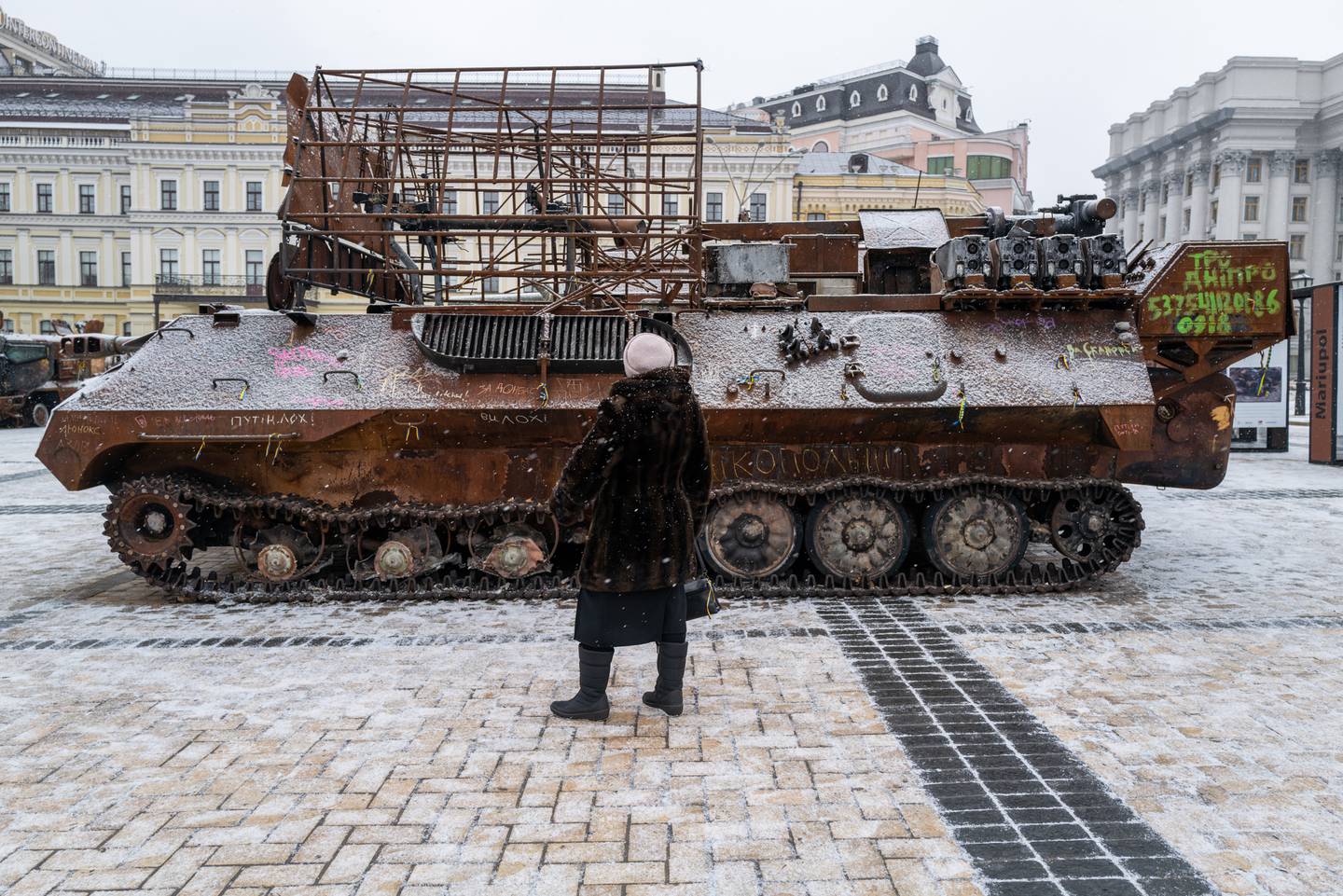
Pressure points
In the course of the past year, Putin’s domestic propaganda strategy has morphed from a message of “fight the Nazis” in Ukraine to “fight the West” there, said Stefan Meister, a Russia and Eastern Europe expert at the Berlin-based German Council on Foreign Relations. “The narrative is the great struggle of the Cold War,” he said, a framing that has helped to attract new recruits.
And the near-total control of information by the government is making dissent difficult. “Those who are against the war have left, and those who remain are adapting,” Meister said.
Past attempts to squeeze the will for war out of Moscow economically also didn’t yield the immediate results for which experts hoped. Cracks may begin to appear this year, however.
“The consensus is that ordinary Russians will start feeling it this year,” said Charles Lichfield, an economics and sanctions analyst at the Washington-based Atlantic Council. “But Russians have a huge degree of tolerance for economic pain.”
Moscow has proved resourceful when it comes to building autonomy into critical goods, Lichfield explained. For example, the tactic of repurposing dishwasher electronics for weapons, mocked in the West as a sign of desperation, probably means “somebody thought about that from the beginning,” he said.
One area to watch is Russia’s payment of pensions. An inability to do so could foster economic discontent capable of turning public opinion against the war, Lichfield told Defense News.
“It would have to get pretty bad for the Russians to get there,” he said, adding that there’s no way of knowing how many reserves the government stashed away after years of fat checks from energy sales.
After imposing sanctions and export controls, Lichfield expects the West’s latest economic pressure point — oil price caps — to yield results because the Russian economy is so tightly linked to the energy market.
Which weapons will Washington send?
The United States, as Ukraine’s most important military supporter, remains the center of gravity when it comes to an eventual outcome for the conflict. American leadership has so far been largely united in their support for Kyiv.
Rep. Adam Smith of Washington, the top Democrat on the House Armed Services Committee, expects the war to end at the negotiating table, but said serious diplomacy hasn’t begun because Putin is still clinging to “maximalist” goals.
“The ultimate end to this is the Ukrainians take back as much pre-Feb. 24 territory as they can get, force Putin to the bargaining table, and then ultimately Ukraine would have to compromise somewhat on issues like Crimea and portions of the east and arrange for solid security guarantees going forward,” Smith told Defense News in a phone interview.

“Right now, the Russians are talking about a major offensive in the next four months,” he added. “It seems like the Russians are at least thinking that they have some possibility of succeeding in that effort. I am skeptical.”
For its part, the Biden administration has started deliberations around the thorny question of whether helping Ukraine should entail retaking Crimea, which Russia seized and then annexed in 2014.
“That would be an extraordinarily risky thing to do,” Smith said. “But it’s important to have those conversations. And from what I understand, high levels of our government have talked about it.”
Charles Kupchan, a senior fellow at the Council on Foreign Relations and the former National Security Council director for European affairs in the Obama administration, said he “would not encourage Ukraine to seek to reassert control over Crimea by force, simply because the escalation risks are very high.”
“Crimea is of considerable strategic importance to Russia,” Kupchan told Defense News. “It looms large historically. It’s difficult for me to imagine that the Russians would accept complete defeat and expulsion from Crimea.”
But some on Capitol Hill are more bullish about lining up behind President Volodymyr Zelenskyy’s goal of fully restoring Ukraine’s sovereignty over its territory.
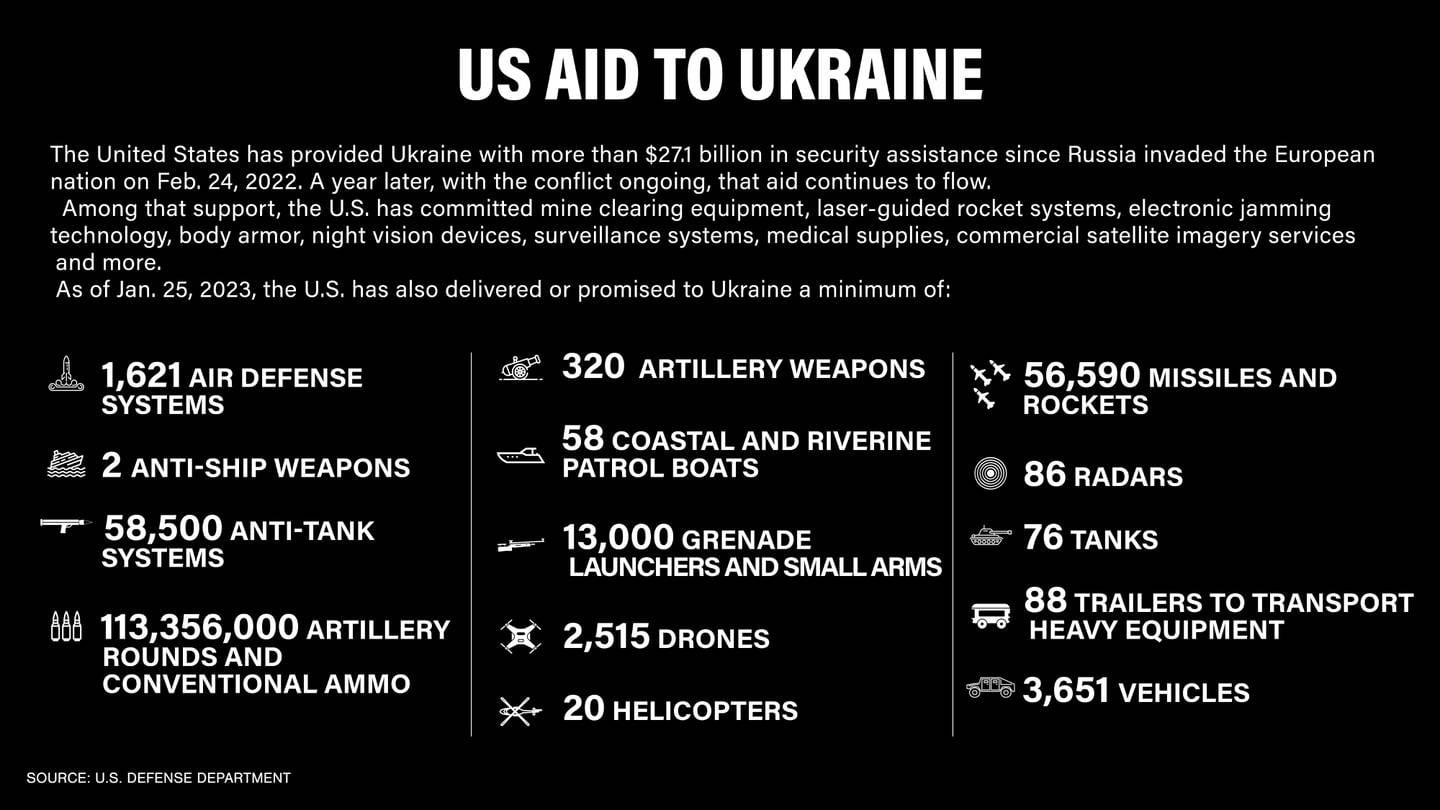
Sen. Richard Blumenthal, D-Conn., visited Ukraine in January and subsequently told Defense News at a news conference that “the American military has consistently underestimated the Ukrainian fighting ability.”
“Everything I have come to learn about the will and determination of the Ukrainians leads me to conclude retaking Crimea is within reach, and they need the artillery that will enable hitting targets — the sites of missiles destroying infrastructure in Ukraine,” he said.
Blumenthal has joined other lawmakers — particularly pro-Ukraine Republicans — in pushing President Joe Biden to give Zelenskyy most of the weapons he requested, including long-range ATACMS missiles and F-16 fighter aircraft.
Sen. Roger Wicker of Mississippi, the top Republican on the Senate Armed Services Committee, also called for sending long-range missiles to Ukraine alongside advanced Gray Eagle and Reaper drones.
“We should deliver these assets quickly to make an immediate difference on the battlefield,” Wicker said on the Senate floor in January. “In concert with our allies, this approach of ‘more, better, faster’ would give the Ukrainians a real shot at victory.”
While the Biden administration has voiced concerns that sending ATACMS to Ukraine could enable strikes into Russia, potentially escalating the war into a broader conflict with NATO, the Ukrainians could use those long-range missiles to strike Russian launch points on their own territory — including in Crimea.

Smith indicated he disagrees with the Biden administration’s decision not to send long-range missiles, noting every Ukrainian official assured him they would not use them to attack Russia.
But Smith also said ATACMS producer Lockheed Martin no longer makes the missiles, and the U.S. military still needs them in its stockpiles.
“We’re looking at a variety of different options there,” he said. “They’re not currently being made, so it is legitimately a question of readiness on our part and whether we’d have enough to spare. There are discussions about other longer-range munitions.”
The Biden administration earlier this month announced it is sending Ukraine the Ground-Launched Small Diameter Bomb. The GLSDB has a range of up to 93 miles, doubling Ukraine’s strike range. However, that still falls short of the ATACMS, which would allow Ukraine to strike Russian targets about 190 miles away.
The Pentagon declined to say whether the GLSDB will be used to attack Russian targets in Crimea. The Ukrainian Embassy in Washington told Defense News that Ukraine would not strike Russian territory with longer-range weapons pledged by the United States.
Future funding
Depending on how long the war lasts, it remains far from certain whether lawmakers will keep funding Ukraine aid packages. Congress provided more than $100 billion in aid to Kyiv since Russia invaded last year, including $61.4 billion in military aid.
The undersecretary of state for political affairs, Victoria Nuland, told the Senate in January the Biden administration still expects the $45 billion Ukraine aid package Congress passed in December to last through the end of this fiscal year. But the assistant secretary of defense for international security affairs, Celeste Wallander, warned at the hearing that the current funding level “does not preclude” the administration from needing to request more assistance before the end of September.
While the bipartisan majority of lawmakers support arming Kyiv, 57 Republicans voted against a $40 billion emergency aid supplemental in May. House Speaker Kevin McCarthy, R-Calif., made several concessions to those Ukraine aid skeptics to secure the votes to win his protracted speakership battle.
He agreed to a House rules change that would allow any member to initiate a vote to remove him as speaker, forcing him to tread carefully even on issues that enjoy majority Republican support — such as Ukraine assistance.
It took 15 votes for McCarthy to secure the position, after which he appointed three Republicans who oppose Ukraine aid — Thomas Massie of Kentucky, Ralph Norman of South Carolina and Chip Roy of Texas — to the Rules Committee, which controls legislation and debate on the House floor.
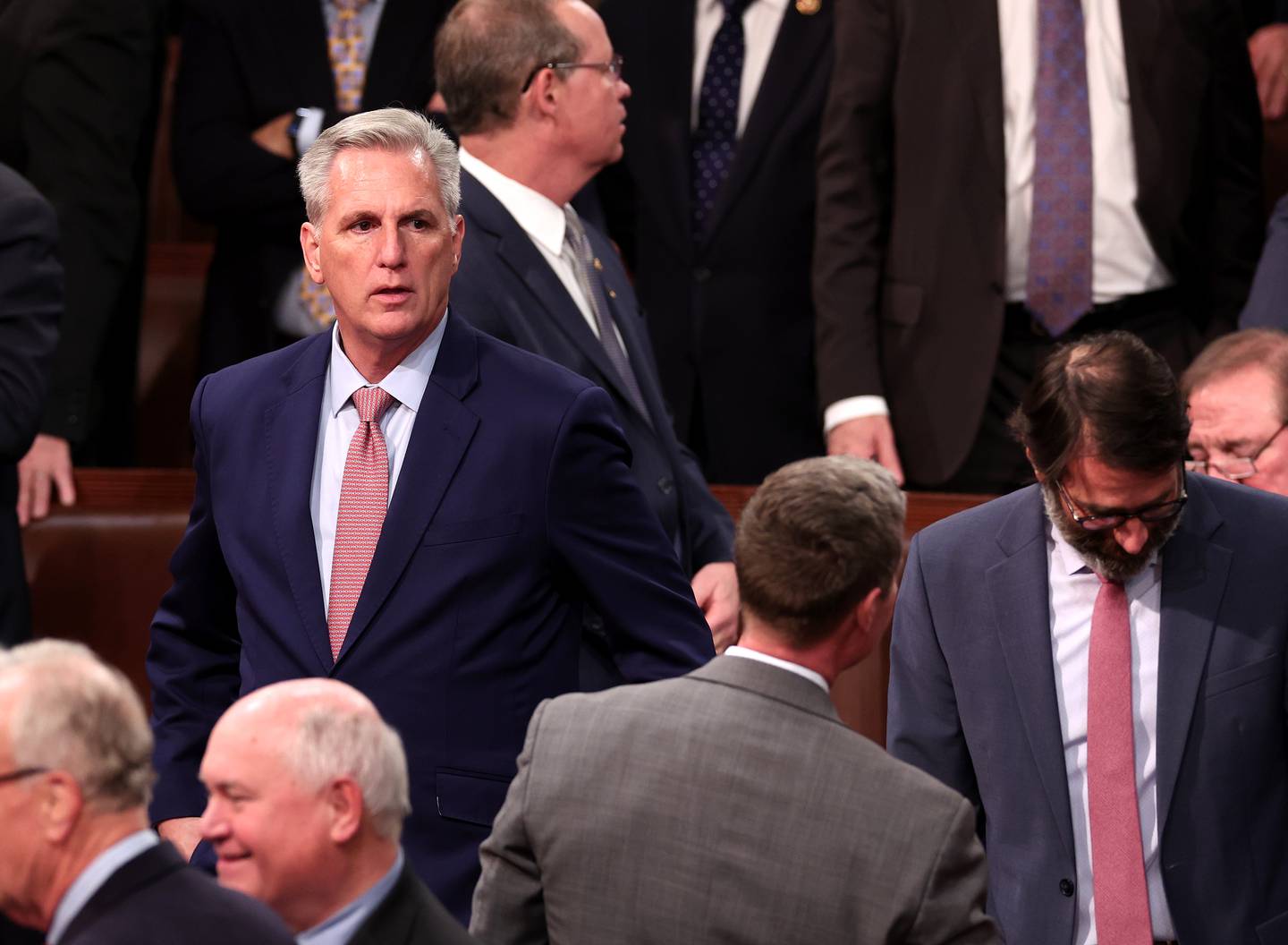
But another McCarthy concession — a procedure allowing 218 members to force a House floor vote on any bill — could present an opportunity for pro-Ukraine Republicans and Democrats to pass additional funding for Kyiv.
Still, the political dynamics may become more complicated in the run-up to the 2024 presidential election, as some prominent Ukraine aid opponents, including former President Donald Trump and Sen. Josh Hawley of Missouri, have already thrown their hats into the ring or are reportedly considering doing so.
Making weapons
One key question that could determine the war’s end game is how long Ukraine’s backers can keep up their arms donations to Kyiv.
“There’s no such thing as infinite resources,” said Jensen, the CSIS analyst. “Heaven forbid this goes on another year, two years. At some point the fighting will exhaust even the entirety of the Western world’s support for Ukraine.”
While defense spending in the United States and Europe is trending upward, in large part because of Russia’s attack, industrial capacity to crank out weapons and ammunition has emerged as a bottleneck.
In response, companies on both sides of the Atlantic announced plans to restart production lines for artillery shells and other weapons considered somewhat arcane until recently.
Wicker said the fiscal 2023 government funding and defense authorization bills include money to expand munitions manufacturing, “doubling and even tripling production capabilities for weapons like 155mm shells, [anti-tank] Javelins and [the High Mobility Artillery Rocket System].”
Still, it’s an open question whether the U.S. will be able to indefinitely continue its current level of support, said Mark Cancian, a CSIS senior adviser who has studied the volumes of artillery used in the war.
“They’re going through it at phenomenal rates,” he said of the Ukrainian military firing artillery munitions. “The U.S. bins are very low. We’re going to increase production substantially, but it’ll still be way below what the Ukrainians are using.”
Joe Gould was the senior Pentagon reporter for Defense News, covering the intersection of national security policy, politics and the defense industry. He had previously served as Congress reporter.
Bryant Harris is the Congress reporter for Defense News. He has covered U.S. foreign policy, national security, international affairs and politics in Washington since 2014. He has also written for Foreign Policy, Al-Monitor, Al Jazeera English and IPS News.
Sebastian Sprenger is associate editor for Europe at Defense News, reporting on the state of the defense market in the region, and on U.S.-Europe cooperation and multi-national investments in defense and global security. Previously he served as managing editor for Defense News. He is based in Cologne, Germany.
Tom Kington is the Italy correspondent for Defense News.
